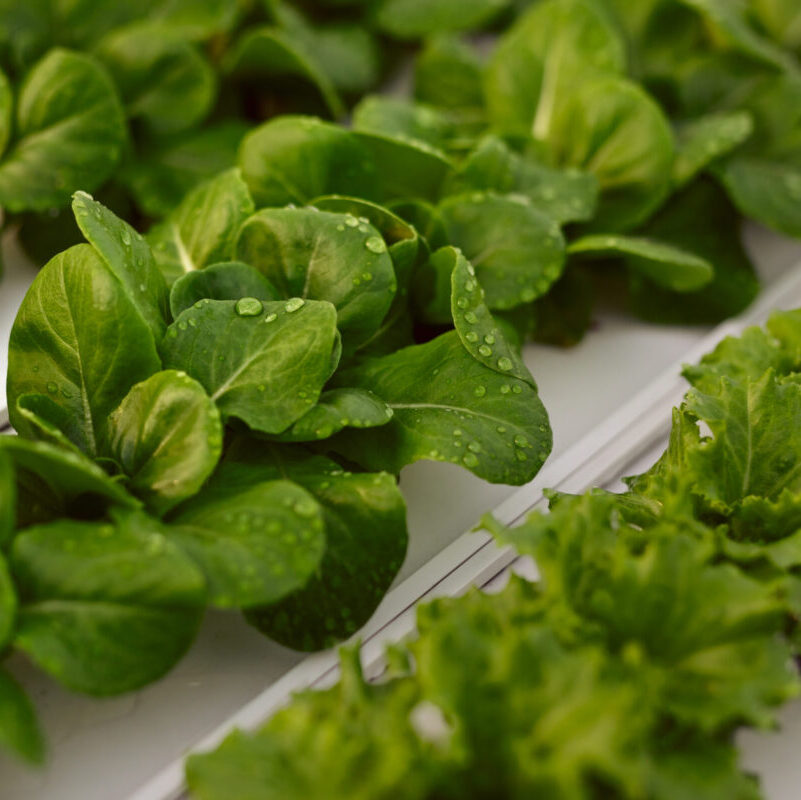Hydroponics is a cultivation method that doesn't use soil. Instead, it uses a nutrient-rich water solution to feed plants directly through their roots. This method not only maximizes available space but also conserves resources by reducing water usage and minimizing fertilizer application. More and more people are exploring new ways to grow plants or food at home, facilitating access to fresh produce and allowing for the monitoring of processes to obtain products in a more natural and organic manner. In this article, we will explore the benefits of hydroponics and how it can be adapted for home use.
Advantages of Hydroponics
- Water Use Efficiency: Hydroponics uses significantly less water compared to traditional soil-based methods, as water is recirculated within the system instead of being lost through runoff.
- Precise Nutrient Control: In a hydroponic system, essential nutrients for plant growth are supplied directly to the roots. This allows for precise control over the amount and composition of nutrients, optimizing plant growth.
- Higher Yield in Less Space: By eliminating the need for soil, hydroponics allows for denser and more space-efficient cultivation. This is especially beneficial for those with limited space at home.
- Accelerated Growth: Plants in hydroponic systems often grow faster than those in soil because they can easily access the necessary nutrients without competition from other plants for resources in the soil.
Home Hydroponic Systems:
Various hydroponic systems can be implemented at home; you just need to select the one that best fits your needs and available space. Some of them include:
- Nutrient Film Technique (NFT): This simple and effective solution is ideal for growing herbs and lettuces in small spaces, where plants are suspended over a nutrient solution to allow direct nutrient absorption by the roots.
- Substrate-Based Systems: Using materials like coconut fiber or perlite to support plants, these systems are adaptable to small pots, ideal for beginners, and suitable for growing various vegetables indoors.
- Vertical Grow Towers: Compact and efficient, vertical grow towers are ideal for limited spaces. With stacked levels, they allow multiple plants to be grown simultaneously through nutrient-rich water dripping from the top.
Plant Selection
Not all plants are equally suited to hydroponics. Opt for plants that adapt well to this method. Leafy greens such as lettuce, spinach, and kale, as well as herbs like basil, cilantro, and parsley, are excellent choices to start with. Be sure to research the specific needs of each plant to ensure healthy growth.
Maintaining Your Hydroponic Garden
After installing the hydroponic system and planting, proper maintenance is crucial to ensure optimal plant growth.
- Nutrient Control: Adjust the nutrients according to your brand's instructions, whether liquid or powder. Monitor the health of your plants to correct any deficiencies or excesses.
- Water Quality: Use filtered water instead of tap water to avoid harmful elements like fluoride.
- Water PH: Regularly check and adjust the water pH to maintain it between 5 and 6, which is optimal for plant growth. Use pH strips to monitor it.
- Water Circulation: Ensure that water in the hydroponic system is constantly moving to prevent stagnant water and bacterial growth.
- Lighting: Ensure your plants receive the right amount of light. If growing indoors, use full-spectrum LED lights and adjust the intensity according to your plants' needs.
- Records and Monitoring: Keep a record of pH levels, nutrient concentrations, and any changes in plant health. This will help you adjust and optimize your system over time.
Home hydroponics offers an exciting and efficient way to grow fresh and healthy food. By carefully following nutrient guidelines, monitoring plant health, and maintaining an optimal environment, we can enjoy successful harvests in small spaces. Hydroponics has many advantages and can be a great innovative alternative for home gardening. Explore the world of home hydroponics and enjoy the fresh fruits of your own garden!
Discover here all the varieties of peppers we cultivate in our greenhouses.




